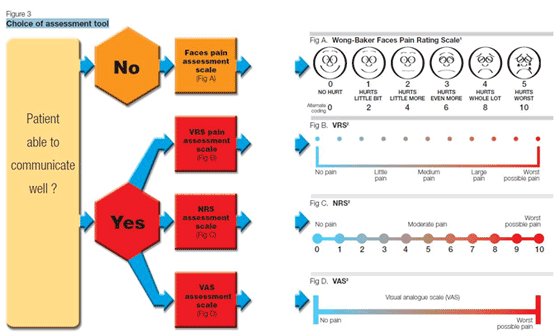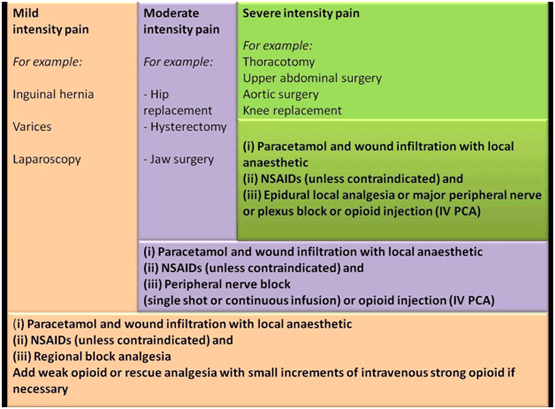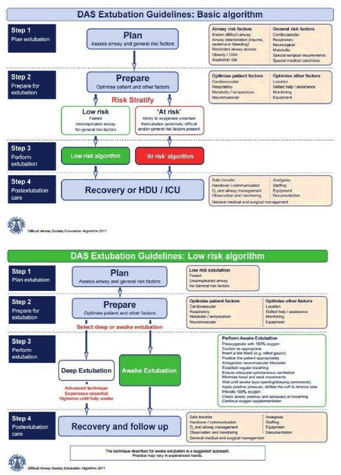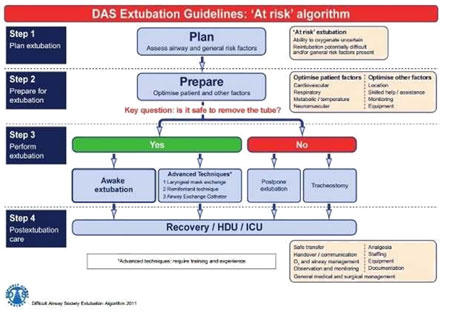| |
ANAESTHETIC CONSIDERATION IN AIDS PATIENTS |
| |
| Dr.R. Selvakumar. M.D.D.A.DNB |
| Professor of Anaesthesiology, |
| K.A.P.Viswanatham Govt Medical College, |
| Trichy. Tamilnadu |
|
| |
The proportion of HIV infected patients coming up for surgical treatment for the co-incident illness is on the rise. The statistics says that around 38 million people are infected with the HIV virus worldwide(2008) out of them, atleast 25% of the people present themselves for incidental surgeries. So, anaesthesiologists, being involved in the anaesthetic and critical care and pain relief need to know the implications of the disease and the drugs given to treat it. An understanding of the pathogenesis of HIV and awareness of the possible drug interactions occurring with HIV therapy may help to guide the choice of anaesthetic techniques. The possibility of nosocomical transmission of HIV higelights the need for anaesthetists to enforce rigorous infection control policies to protect themselves and other theatre personnel. |
| |
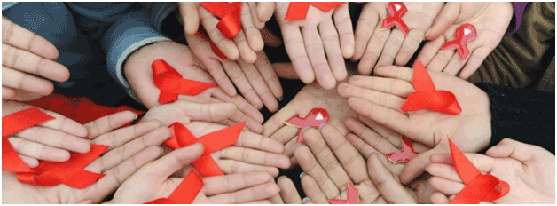 |
| |
Background : |
| |
HIV is a single stranded RNA virus of the lentivirus subfamily of the reterovirus family. Two subtypes have been identified –HIV-1and HIV-2. At present , two major groups of HIV-1 subtypes have been recognized(HIV-10 and HIV-1M) . Like other reteroviruses, HIV contains the enzyme reverse transcriptase that enables viral RNA to be transcribed to DNA, which then becomes incorporated into the host cell genome and is able to replicate freely. HIV preferentially infects T helped lymphocytes(CD4 T cells) and leads to their progressive quantitative and qualitative destruction, making the host more susceptible to opportunistic infections and maliguancies. |
| |
Modes of transmission : |
| |
HIV is a virus found mainly in CD4 Tcells, macrophages and monocytes and requires a large infecting dose for transmission. HIV has been isolated from blood,CSF,Tears,saliva semen,synocial fluid, pleural fluid, peritoneal and pericardinal fluid, amniotic fluid, vaginal secretions and breast milk. |
| |
Several modes of transmission of infection exist including sexual intercourse (60-70%), mother to child transmission (during pregnancy, labour and breast feeding) (20-30%) contaminated blood, blood products(3-5%)and contaminated needles. |
| |
Clinical staging of HIV infection : |
| |
1. Asymptomatic |
| |
 | No symptoms. |
 | Persistent generalized lymphadenopathy. |
|
| |
2. Mild symptoms: |
| |
 | Moderate weight loss. |
 | (<10% body weight). |
 | Recurrent upper respiratory tract infection. |
 | Viral or fungal skin infection. |
 | Oral or skin lesion. |
|
| |
3. Advanced symptoms : |
| |
 | Severe weight loss (>10% body weight). |
 | Chronic diarrhea, Persistent fever. |
 | Oral lesions or candidiasis. |
 | Pulmonary tuberculosis. |
 | Severe bacterial infections. |
 | Anaemia, neutropenia, thrombocytopenia. |
|
| |
4. Severe symptoms : |
| |
 | Wasting syndrome. |
 | AIDS (weight loss >10% body weight with wasting or body mass index <18.5). |
 | Chronic diarrhea, Persistent fever. |
 | Encephalopathy, nephropathy, cardiomyopathy. |
 | Recurrent bacterial infections, Opportunistic infections, Malignancy. |
|
| |
Pathophysiology of HIV infection : |
| |
A thorough understanding of the pathophysiology of the disease helps in proper preoperative assessment and planning of the anaesthetic management. There may be multisystem organ involvement either due to opportunistic infection or due the drugs given to treat the HIV infection. |
| |
Cardiovascular system : |
| |
The common complications due to infection are as follows : |
| |
 | Dilated cardiomyopathy. |
 | Pericardial effusion. |
 | Endocarditis and valvular besions. |
 | Acute coronary syndrome. |
 | Vasculitis. |
 | Pulmonary hypertension. |
|
| |
Respiratory system : |
| |
The following respiratory complications are seen |
| |
 | Airway obstruction by Kaposi sarcoma or infections. |
 | Bronchitis. |
 | Sinusitis. |
 | Pneumonia. |
 | Atypical infections. |
|
| |
Gastrointestinal system : |
| |
 | Difficulty or pain on swallowing. |
 | Increased gastric emptying time. |
 | Diarrhoea. |
 | Hepatobiliary involvement. |
 | Pancreasitis. |
|
| |
Renal system : |
| |
 | HIV associated nephropathy. |
|
| |
It necessitates the avoidance of nephrotoxic drugs and the need for adequate hydration to prevent further deterioration of renal function. |
| |
Neurological system : |
| |
HIV can affect all structures including the meninges, brain,spinalcord, peripheral nerve or muscle. There may be cognitive impairment, encephalopathy, autonomic neuropathy and seizures. Full neurological examination preoperatively with appropriate documentation is essential especially if regional anaesthesia is planned. |
| |
Heamatological system : |
| |
 | Anaemia. |
 | Neutropenia. |
 | Thrombocytopenia. |
 | Persistent generalized lymphodenopathy. |
 | Haematological malignancies. |
 | Coagulation abnormalities. |
|
| |
Endocrine and metabolic system : |
| |
The drugs can cause the following side effects... |
| |
 | Lipodystrophy. |
 | Disorders of H.P.A axis (Addison disease and cushing syndrome). |
 | Hyponatreamia due to S.I.A.D.H. |
 | Hypo or hyperthyroidism. |
 | Lactic acidosis. |
|
| |
Drug and anaesthetic importance : |
| |
HIV infected patient may be on drugs which include antiretero virals, anti tuberculous drugs, pentamidine and steroids. The following are some of the anti veterovirals with their common side effects. |
| |
| Drugs |
Side effects |
| Nucleoside analogues |
| 1 . Zidovidine
|
Marrow supression,myopathy,Inhibits cytochrome p450. |
| 2 . Lamividine.
|
Well tolerated. Diarhoea, headache.Peripheral neuropathy. |
| 3 . Stavudine
|
Peripheral neuropathy. |
| 4 . Tenofovir
|
Renal toxicity. |
| 5 . Didanosine
|
Diarhoea, peripheral neuropathy. |
| Protease inhibitors |
| 1 . Indinavir
|
Nephrolithiasis, Inhibits cytochrome p450. |
| 2 . Saquinavir
|
Diarhoea,headache, Inhibits cytochrome p450. |
| 3 . Ritonavir
|
Inhibits cytochrome p450, elevated triglycerides. |
| 4 . Atazanavir
|
Diarhoea,jaundice. |
| Nonnucleosides |
| 1 . Efavirenz
|
Dizziness,teratogenicity. |
| 2 . Nevirapine
|
Rash, induces cytochrome p450. |
| Fusion inhibitors |
| 1 . Enfuvirtide
|
Injection site reactions, headache ,bacterial pneumonia. |
| 2 . Pentamidine
|
Bronchospasm, arrhythmias, electrolyte imbalance. |
| 3 . Anti TB drugs
|
Hepatic renal dysfunction, thrombocytopenia. |
|
| |
Anaesthetic considerations : |
| |
Patients with HIV infection can report for HIV related problems (lymph node biopsy, drainage of abssess etc) or unrelated problems like trauma which has become very common now. |
| |
A through pre operative checkup should include... |
| |
 | Careful history – to know about the presence of any serious system involvement. |
 | Investigations: apart from the routine investigation, special attention to be given to rule out haematological involvement. |
 | CD4 count (count> 500 is better): infective complications in the postoperative period is more if the count is less than 200/mm3. |
|
| |
General considerations in selecting the type of anesthesia : |
| |
 | No surgery should be deferred on the basis of HIV positivity alone. |
 | ASA risk class is more important than HIV status. |
 | General anaesthesia is acceptable but drug interactions and multi system involvement caused by HIV should be considered. |
 | Regional anaesthesia is safe but the presence of local infections, coagulapathy and neuropathy should be ruled out. |
 | Anaesthesia and surgery decrease cell mediated immunity and the effects are more pronounced after general than regional anaesthesia. |
|
| |
Drug interactions : |
| |
 | Anti reteroviral drugs affect cytochrome p450, so drugs which don’t depend upon this enzyme have to be used. Drugs like etomidate,atracurium,remifentanyl and desflurane are independent of metabolism by cytochrome p450. |
 | Midazolam and fentanyl are affected by cytochrome and are better avoided. |
 | Succingl cholrine should be used with caution in renal dysfunction and in the presence of myopathy. |
 | Cytomegalovirus adrenalitis may need steroid supplementation |
 | HIV associated anaemia, tachycardia, fever and hypoprotemia may necessitate more rationale use of anaesthetics. |
 | Oropharyngeal and oesophageal pathology may make the intubation difficult. |
 | Lung pathology may necessitate elective postop ventilation and a high intraoperative F1O2. |
 | Usage of filters to protect the anaesthetic circuit is necessary to protect from cross infection. |
 | HIV per se does not increase post operative complications. |
|
| |
HIV and Obstetrics : |
| |
The risk of transmission from the HIV infected mother to child is around 25% zidovidine mono therapy has reduced the incidence to 8% and a combination of ART and elective caesarean section has reduced the transmission to 2%. There is little evidence to suggest that HIV increases complications of pregnancy or pregnancy alter the clinical profile of HIV infections. Spinal anaesthesia is a safe choice of anaesthesia for caesarean sections taking the universal precautions. |
| |
Risk of Cross infection : |
| |
Transmission from patient to Anaesthetist : |
| |
HIV can be transmitted from the infected patient to the anaesthetist as a result of exposure to infected body fluids. This can occur either through a sharp injury or splashing of a mucoal membrane or broken skin with the patient’s body fluid especially saliva or oral secretions. |
| |
Most contaminated percutaneous injuries occur during recapping of needles or when contaminated sharps are not discarded safely. |
| |
Poor infection control practice in anesthetists puts them in risk. In a survey, anaesthetists wore gloves for 8%(peripheral vein cannulation) to 90% (central vein cannulation) of procedures performed. A needle stick injury through one pair of gloves has been associated with a 10-100 fold reduction in the inoculums. There is an additional benefit if a second pair of glove is worn. Constant vigilance and the use of universal precautions when caring for all patients are required by the anaesthetist in the operating theatre in order to avoid contracting infection from patients. |
| |
Patient to patient transmission : |
| |
Contamination of anaesthetic equipment is a potential route of HIV transmission. Airway devices like ETT should not be reused. The anaesthetic circuits are the potential sources for cross contamination. Heat and moisture exchange filters effectively filter bacteria and viruses thereby minimizing the risk of contamination of respiratory equipment. |
| |
Post exposure prophylaxis : |
| |
Following an accident with high risk body fluid, such as a needle stick injury, post exposure prophylaxis is recommended .This should commence as soon as possible after the injury, ideally within 1-2 hours, but can be considered upto 1-2 weeks after the injury. A recommended regimen is zidovudine 250mg bd, lamivudine 150mg bd plus indinarir 800mg tds for duration of 4 weeks. The high rate of toxicity and non compliance may necessitate other regiment. |
| |
Universal precautions : |
| |
Universal precautions as defined by CDC64 (Centers for disease control and prevention) are a set of precautions designed to prevent transmission of HIV to health workers while providing health care. They apply to blood, body fluids containing blood, semen, vaginal secretions, tissues, CSF, pleural, peritoneal, pericardial and amniotic fluids. |
| |
They do not apply to faeces, sputum, sweat, tears, urine and vomitus unless they contain blood. |
| |
1. Washing Hands - One of the most important requirements and the one that is most commonly ignored is washing hands, before and after seeing a patient. Strict adherence to washing hands with ordinary soap clearly reduces the risk of transmission of HIV and many other infectious agents. |
| |
2. Wearing Gloves - A pair of disposable plastic gloves have to be worn whenever the potential for a contact with the patient’s body fluid exists. At surgery, where there is a risk of injury from sharp objects, double gloving with good quality latex gloves is recommended. Fortified gloves that reduce chances of injury from sharps are not universally available and are also expensive. |
| |
3. Eye Glasses/Cap/Mask - The eyes are to be protected from split secretions by wearing goggles; the conventional glasses worn for correction of eyesight defects are open in the sides; but nevertheless give acceptable protection. The cap and mask protect the head and face from being exposed to spillage. |
| |
4. Foot Wear - The feet are notorious for little cuts and abrasions that may be contaminated by body fluids. Gumboot types of footwear are to be worn to avoid this. |
| |
5. Impervious Gown - While disposable impervious gowns are available, the cost may not be justifiable. In our conditions, use of a plastic apron under the conventional operating gown will serve the purpose. |
| |
6. Needles and Sharps - Manipulation of needles like bending and re-sheathing should be avoided. The used needles are to be deposited in thick walled puncture resistant containers for later incineration. Thick cardboard boxes discarded in the pharmacy can be for this purpose. A small square hole is made in the top for deposition of the needles. It is sent for incineration when two thirds full. |
| |
7. Surgical technique - Risk from needle prick injuries are greatest when working in depths like pelvis, the diaphragmatic hiatus or the chest. The use of the hand to direct the passage of needles is to be avoided. |
| |
While blunt needles have been shown to drastically reduce injuries, they are expensive and are not universally available. |
| |
8. Soiled linen - Soaking soiled linen for 30 minutes in 1:100 bleach solution (hypochlorite solution) kills the HIV virus completely. These can then be processed normally with washing and autoclaving as usual. |
| |
9. Metal Instruments - Metal instruments are washed with soap and water. They are then soaked in 2% Glutaraldehyde solution for 30 minutes to kill the virus. The sharp instruments are transferred to another container with fresh glutaraldehyde and soaked for a further six hours. The other instruments are autoclaved. |
| |
10. Plastic tubings - The anaesthetic tubings, tubings used for suction and those used in rotary pumps are all soaked in 2% Glutaraldehyde for six hours after cleaning with soap and water. Where available, these can also be subjected to ethylene oxide sterilization. Unfortunately a lot of hype is created, particularly in the lay press, regarding the conduct of surgical procedures on AIDS patients. Special scheduling during weekends, summary disposal of ‘’costly’’ instruments and linen are all quoted as safety measures. A pragmatic view of the situation should convince us that operating on an AIDS patient is practically no different from operating on any other patient, if universal precautions are universally followed. Routine preoperative testing may be misleading because of the window period and adherence to universal precautions is a must. One of the important defects with universal precautions is that it is not foolproof against needle injuries. |
| |
There are some new engineering devices which decrease needle stick injuries... |
| |
 | Retractable lancets used for blood sampling by heel stabs and finger sampling. |
 | Retractable needles used for injections and immunizations. |
 | Shields added to needles for injections and venepuncture which are activated by the operator at the end of the procedure. |
 | Protected disposable scalpels with a shield that can be activated before passing the instrument between staff and before disposal. |
 | Blunt suture needles and... |
 | Intravenous cannula with blunting or guarding of the needle of the introducer that is activated when removed from the plastic cannula. |
|
| |
Conclusion : |
| |
Anaesthetists are primary care physicians in trauma care come across lot of screened and un-screened patients in their day today practice. Rigorous infection control practice is imperative to protect their patients and themselves. For that current knowledge about the HIV and its drug therapy is essential for optimal conduction of anaesthesia and surgery. |
| |
References : |
| |
1. The implications of HIV for the anaesthetist and the intensivist- Review article by M.S.Avidan,N.Jones and A.L.Pozniak in anaesthesia,2000. 55-344-354 |
| |
2. HIV and anaesthesia- Dr.S.Parthasarathy and Dr.M.Ravishankar- Indian Journal of Anaesthesia-2007, 57(2):91-99 |
| |
3. HIV and anaesthesia- Update in Anaesthesia- by Samantha Wilson. |
| |
Further reading : |
| |
1. HIV AND THE OBSTETRIC PATIENT: ANESETHETIC CONSIDERATIONS, |
| |
The Internet Journal of Anesthesiology, Volume 24, Number 1. |
| |
2. Anaesthesia and critical care for patients with HIV infection. |
| |
Contin Educ Anaesth Crit Care Pain (October 2005) 5 (5): 153-156. |

